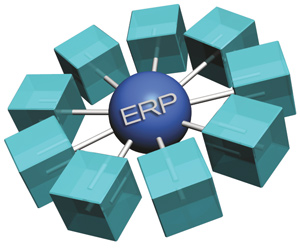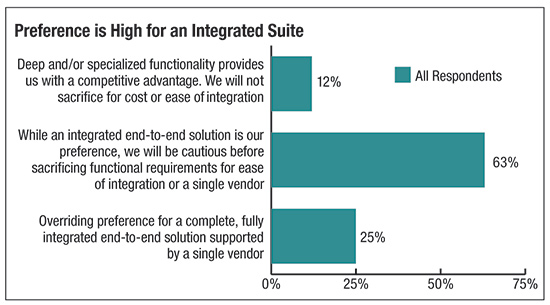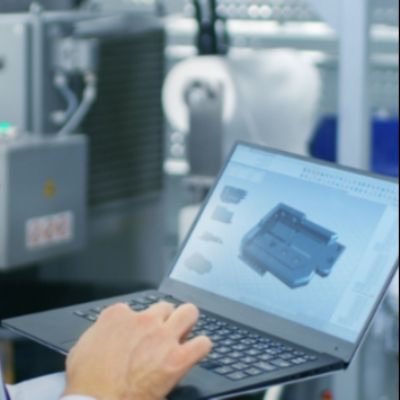The bottom line: Functionality that once required specialty add-on solutions now may be satisfied through ERP. And, even basic core features may be delivered through new components outside of your standard packaged releases.
Many of these new components will be offered in the cloud, which also will better facilitate accessing them from mobile devices. This will broaden the base of users engaged with these applications, and that broader base will extend to higher levels in the corporate structure—a more-demanding audience. Expect executives to become more engaged and demand more from the data that has been sitting dormant and underutilized for years (Fig. 2).
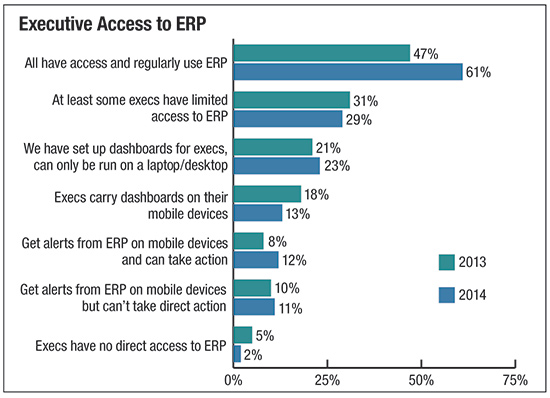
Fig. 2
The Cloud, and the Widening Gap Between “Haves” and “Have Nots”
Those that “get it” will use new ERP technology to solve problems previously deemed unsolvable. As a result, the gap between the “haves” and “have nots” will widen. Achieving or maintaining a competitive edge will become difficult, if not impossible, without the right supporting technology.
Does that mean you need to be a technologist to get ahead? No, you only must understand the possibilities and be open to change. Outdated technology and lack of functionality are most often cited as the reasons for replacing legacy ERP systems. Those hesitant to replace their legacy systems must remove their heads from the sand, and at least consider raising them to the cloud.
While somewhat of an over-simplification, the primary benefit of cloud-based ERP is the ability to access enterprise software anytime, from anywhere. SaaS also can change the game in terms of innovation. Our survey respondents recognize the potential for many of these benefits, with a heavy emphasis on cost savings—the most obvious being the elimination of an upfront license fee and the initial and ongoing maintenance cost of hardware.
Relatively few survey takers understand how SaaS ERP can deliver innovation. A traditional ERP upgrade cycle can last several months, as the vendor plans, develops and tests new features and functions and then sends the packaged enhancements through test cycles with a select few customers. In the end, some customers might wait 2 to 3 years before installing these enhancements.
This process reinforces the benefits of developing enhancements as independent external components that can be delivered incrementally. But there als will be some innovations that require modification to existing code. Conversely, if a vendor only must maintain a single set of program code (the latest release) and can package up and deliver new features, in small chunks, as they are developed and fully tested, then it only stands to reason that it can accelerate the pace of innovation. This also ensures that no customer is left behind running old, outdated releases. This becomes possible in a SaaS environment and, as a result, SaaS vendors have succeeded in raising the bar in terms of quickly delivering enhanced functionality.
Be warned, however, as such innovation is not guaranteed. When choosing a solution, whether SaaS, hosted or on-premise, customers must ask questions about the pace of and methodology behind innovation. Customers that demand more receive more.
The Mobile Executive
As noted earlier, top-level executives are becoming more directly connected to ERP. The less tethered we become to wired connections, the more tethered we become to the business.
Our survey finds that although 76 percent say they receive alerts based on enterprise data, only 18 percent get alerts from ERP (9 percent can take action and 9 percent cannot). That means many of those alerts are prepared manually and sent through e-mail, text or chat functions.
So why haven’t we made any more progress in taking action from ERP alerts sent to our mobile devices? Consumer apps on mobile devices have raised the bar in terms of defining “easy to use” and “intuitive.” Executives will not tolerate an enterprise application they can’t intuitively navigate, or complexities that prevent them from answering questions, even if many of the questions are quite complex.
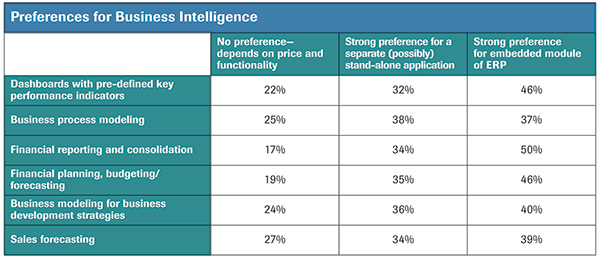
Fig. 3
Moving Big Chunks of Data—Quickly
The term “big data” is thrown around quite liberally these days and it can mean different things to different people. Wikipedia defines it as “a collection of data sets so large and complex that it becomes difficult to process using on-hand database management tools or traditional data processing applications.”
This definition would lead us to believe big data is a big problem for ERP, and in fact over the years ERP has developed a bad reputation. It typically is easier to get data into ERP than to get data (and decisions) out. While response times for transactions have improved exponentially, manufacturers still are not typically making decisions based on real-time data, for two reasons: speed and visualization.
Speed—Where there are large volumes of data, processing times become long and often are done “in batch.” Nobody wants to sit and wait while ERP crunches the numbers and prepares long reports. Traditionally, that processing occurred in the background or even overnight, based on a snapshot in time. The problem was (and still is) that by the time the long batch was processed, the data, or even the question, may have changed.
The ability to process data in memory solves this problem. Instead of waiting for results overnight, a manager can run the analysis, look at it, make some notations or changes, and run it again. Suddenly he is making decisions from real and accurate data.
Visualization—Even if we can quickly process the data, becoming mired in long reports can impede progress. In order to quickly analyze the data, manufacturers must replace traditional reporting with analytics (Fig. 3). In addition to charts and process maps, we must be able to drill down to successive levels of detail. And once we’ve seen data in a single dimension (sales by territory, for example), we need to add new dimensions (sales by product line and sales rep, for example). And because we can’t als anticipate what we want, we want to do it on the fly.
Social ERP Supports Collaboration
“Social,” another hot trend, gets interpreted differently depending on who you are and what perspective you take. From an ERP perspective, social should mean improved collaboration, visibility and connectivity. For the traditional businessperson accustomed to traditional means of communication, social can have an unfortunate connotation.
An ERP system with social capabilities features easy and intuitive search capabilities and has a highly configurable user interface to support a personalized workspace. It pushes data to those that need to know instead of waiting for data to be pulled. And, it employs the concept of following—not just people but business objects and events such as sales orders, customers and products. A social ERP system can build activity streams that can be subscribed to and monitored. The result is better visibility, fewer surprises and more proactive rather than reactive management.
Applying social concepts to ERP can unlock much of its potential. By improving the user experience and making data more easily and naturally accessible, we remove a layer of disconnect and improve transparency and visibility. This added visibility connects teams and supports collaboration.
Seldom has an entire market agreed on what trends are most influential, and yet today we see an unprecedented level of consensus. ERP innovation must result in improved connectivity, visibility and collaboration and draw the biggest crowd of willing users. MFView Glossary of Metalforming Terms
See also: Mint Jutras
Technologies: Management, Sensing/Electronics/IOT







